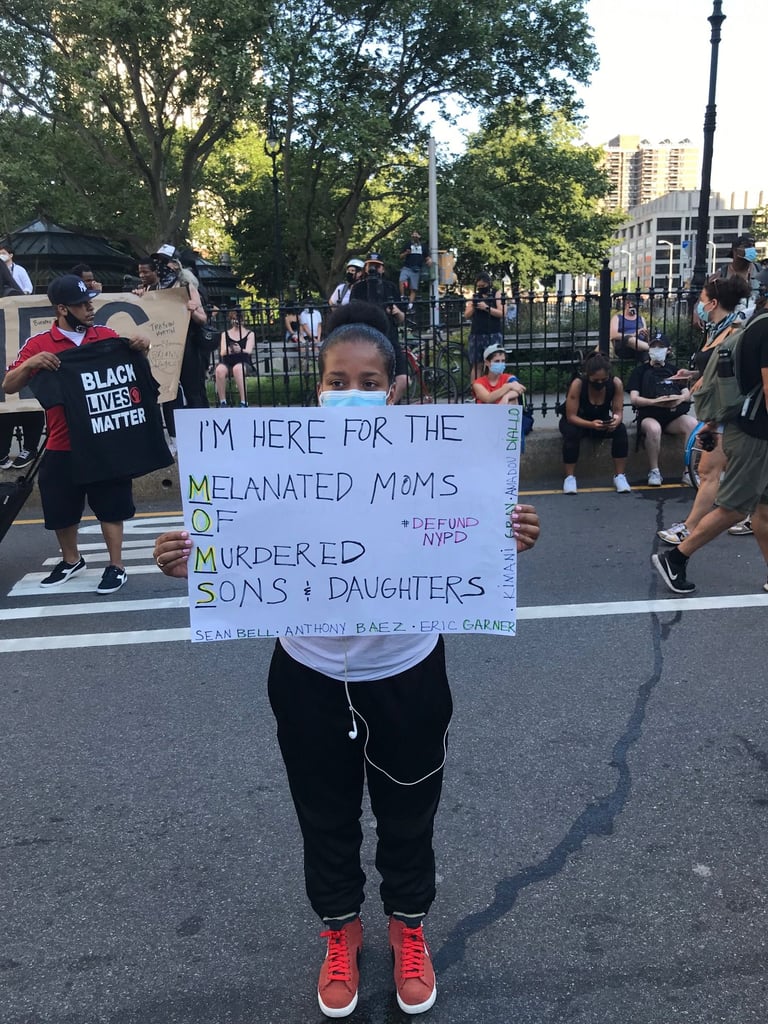MANHATTAN (CN) — If any one slogan animates the Black Lives Matter protests across the nation, it is the command: “Say his name,” a reminder that the parade of victims killed by police had identities, families and people who love them.
It is the reason the entire globe has been moved to the streets by the late George Floyd, who died late last month gasping for air as a police officer knelt on his neck for nearly nine minutes.
Taking a roughly two-mile pilgrimage across the Brooklyn Bridge on Tuesday afternoon, thousands of New Yorkers paid a visit to New York City Hall to repeat scores of names spoken by the mothers of the dead, including Guinean immigrant Hawa Bah, whose son Mohamed Bah died from eight police bullets fired at him inside his house; Kadiatou Diallo, whose son Amadou Diallo had 41 shots fired at him by police; and Constance Malcolm, the mother of slain 18-year-old Ramarley Graham.
“They shot my son eight times in his own house,” shouted Bah, standing between City Hall and Manhattan federal courthouse where she won a $2.2 million jury verdict for her son’s wrongful death in 2012.
These names may not have the same global recognition as Floyd’s, but they are known to New Yorkers.
“I've marched for Diallo,” Sukari Mtume, a 30-year-old working in theater production, recalled.
“I've marched for Sean Bell,” she added, referring to the Queens resident shot 50 times in Queens in 2006. “And I'm here for George and everyone else today.”
Her handmade placard listed those names and others and though a familiar ritual for her, the march stirred an emotional response for Mtume, who said she was crying as protesters took control of the Manhattan-bound road across the Brooklyn Bridge.
“Because it's so many people,” Mtume said. “There's white people. There's black people. I think that really touched me, you know. I wasn't really sure what to expect. But I think to see everyone in such unity and. It's so peaceful. And it really just touched my soul, really deeply.”
Spotted among the thousands of placards were Warholian images of George Floyd, painted by an artist collective Artists for George and distributed to demonstrators. Carrying one of the portraits was Greg, an accountant and first-time protester who declined to give his full name.

Asked what brought him to the gathering, Greg replied simply: “Social injustice.”
“My grandparents marched on Washington, so I have to do my part,” he added.
In two short weeks, the protests have triggered seismic reforms — some quite radical, systemic and struggled over for years. Minneapolis dismantled its police department and will replace it anew, an experiment attempted successfully in Camden, New Jersey, in 2013. Los Angeles defunded its police by up to $150 million, which it intends to reinvest in communities of color. The New York State on Tuesday announced a suite of reforms designed to make police more transparent and accountable by opening their disciplinary records to public scrutiny.
Alysha Siddiqui, a line cook carrying a sign with the phrase “The Revolution Will Be Televised,” wondered why New York could not emulate Los Angeles in reducing the police department’s budget, currently at a cool $6 billion.
“After ours is the LAPD, and it's like a fraction of what we have,” Siddiqui noted. “So defunding for me means putting that money in places that more immediately affects the people it's meant to go to, people it's meant to protect.”
Like many mainstream politicians, New York City Mayor Bill de Blasio has chafed at the pace of rapid change, facing pressure from a police union that has attacked his daughter and internal dissent from his own Civil Rights Commission, which protested against him.













